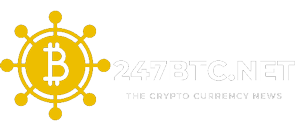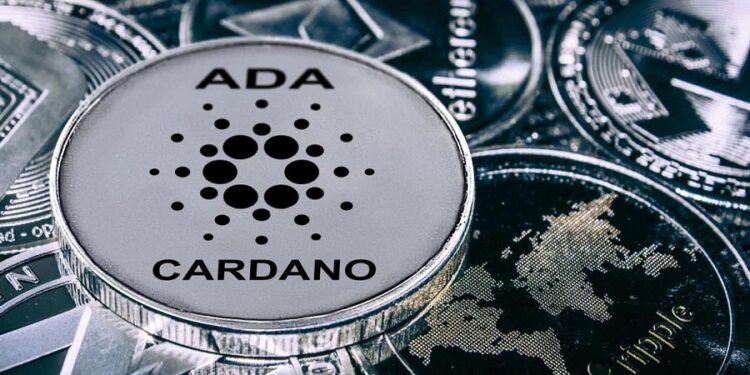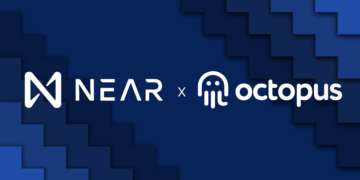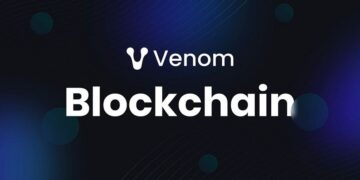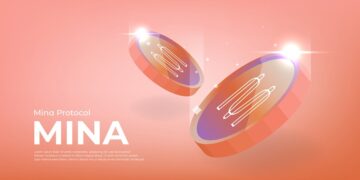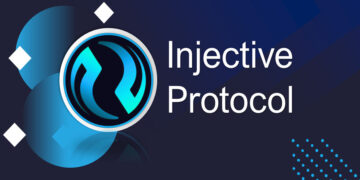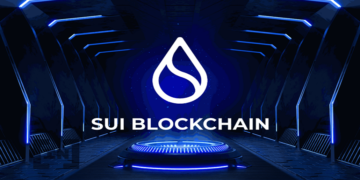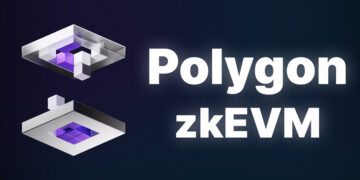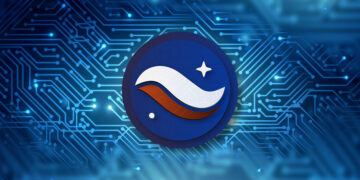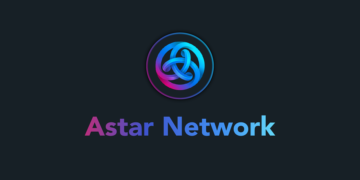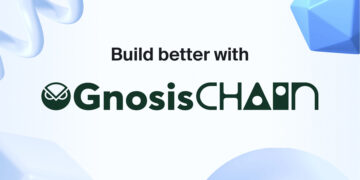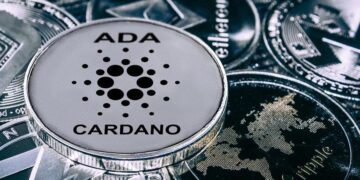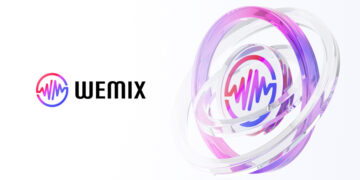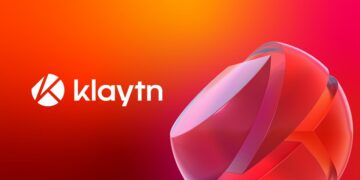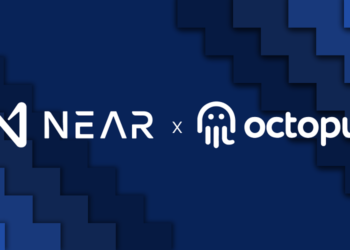The Cardano platform is a blockchain program that provides smart contracts for the development of dApps. With its associated ADA coin, this network aims to construct sophisticated smart contracts to offer enhanced functionalities compared to previous platforms. Therefore, Cardano is a versatile platform that is suitable for decentralized application development with advanced features and capabilities.
Table of Contents
ToggleWhat is Cardano ( ADA coin ) ?
Cardano is a decentralized blockchain platform that was created by Charles Hoskinson, who is also a co-founder of Ethereum, in the year 2015. In 2017, Cardano was officially launched and successfully raised a capital of 60 million dollars through an initial coin offering (ICO) method.
The strategic objective of Cardano is to create a blockchain infrastructure that enables numerous developers to build decentralized applications (dApps) and establish a decentralized finance (DeFi) ecosystem on the Cardano network.
The cryptocurrency market is known for its fast-paced changes, and from 2017 to the present day, the market has witnessed the emergence and departure of countless projects. However, even amid such rapid changes, Cardano has not only remained steadfast but also achieved a market cap ranking of #3 in the cryptocurrency market, with a staggering value of up to $80 billion. One might wonder: what sets Cardano apart and makes it so unique?
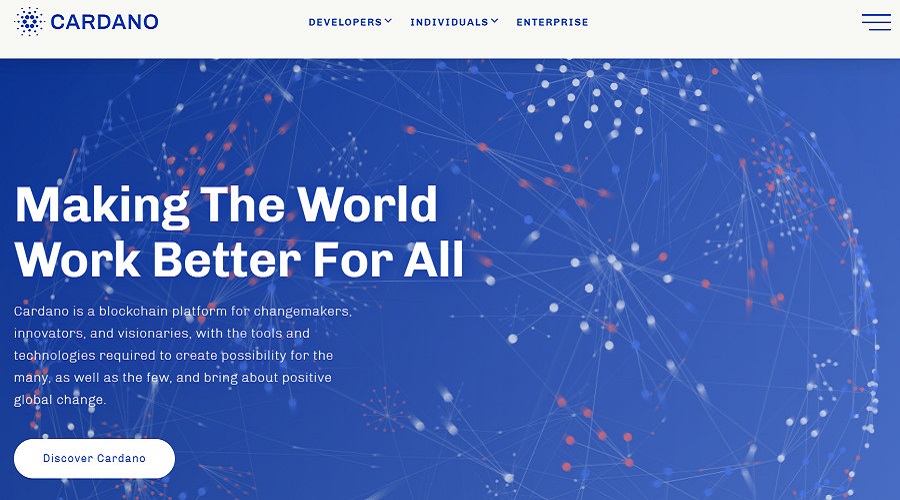
The prominent attributes of Cardano
Cardano offers solutions to three significant challenges encountered in the Blockchain ecosystem, which encompass:
- Scalability.
- Interoperability.
- Sustainability.
Scalability
When discussing the potential for expansion, the immediate thought among peers is typically transaction quantity per second (TPS). However, for Cardano, the capacity for expansion encompasses three elements.
- Transaction Per Second (TPS):Cardano employs the consensus algorithm of Ouroboros, which falls under the category of Proof of Stake. This approach ensures efficient and secure transaction processing, as it allows for network participants to validate transactions and earn rewards based on their staked assets.
- Network: To increase the bandwidth of the network, Cardano employs the use of Recursive Inter-Network Architecture (RINA) technology to divide the network into multiple subnetworks, and these subnetworks can interact with each other as needed. This approach allows for more efficient management of network traffic and enhances the scalability of the network.
- Data Scaling: In an effort to reduce the data footprint of each transaction, Cardano is currently exploring two distinct solutions, namely Subscriptions (partitioning) and Sidechains. The team is placing a great deal of emphasis on these two approaches, recognizing their potential to enhance efficiency and streamline transaction processing.
Interoperability
Presently, there are numerous Blockchain platforms available, yet these Blockchains are unable to communicate and interact with one another. According to the roadmap, Cardano is set to provide a solution for the interoperability of different Blockchains after the Goguen phase, which will be elaborated upon in detail later on.
Sustainability
The sustainability of a Blockchain project is of utmost importance, with the challenge being to strike a balance between the benefits of miners/nodes and the development organization, in order to ensure the project operates stably over a prolonged period.
In this scenario, the Cardano Foundation will require a budget for the development of Cardano following the termination of IOHK’s contract in 2020.
Therefore, Cardano is considering the creation of a reserve fund similar to what Dash has implemented, whereby a portion of ADA would be collected upon the creation of a new block.
Compare Cardano vs Ethereum
It is notable that both Cardano and Ethereum were launched in the year 2015. However, Ethereum has exhibited faster development in terms of the quantity of decentralized applications (dapps) produced than Cardano. This observation suggests that Ethereum has established a more robust ecosystem for dapp development compared to Cardano.
This could be attributed to the fact that Cardano took 2 years to demonstrate their theory and is currently preparing to integrate smart contracts into their network in the Goguen phase.
Cardano boasts a transaction speed that is ten times faster than Ethereum, thanks to the implementation of the Ouroboros consensus algorithm.
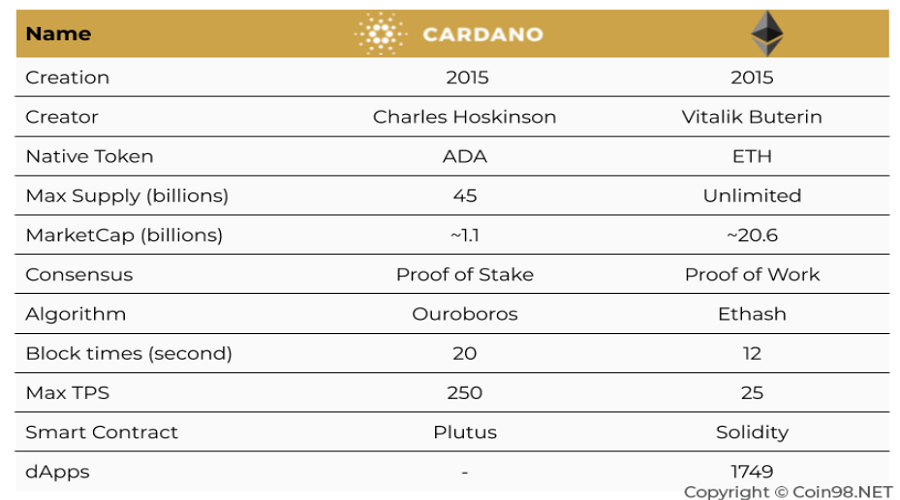
Detailed information about ADA Coin
What is ADA coin?
ADA is the official cryptocurrency of the Cardano blockchain network, which was introduced to the market in late 2017. It is built on the foundation of Cardano, with the smallest unit being lovelace (1 ADA = 105 lovelace).
Key Metrics ADA
- Ticker: ADA.
- Blockchain: Cardano.
- Consensus: Proof of Stake (PoS).
- Algorithm: Ouroboros.
- Token Type: Coin.
- Contract: 0x3EE2200Efb3400fAbB9AacF31297cBdD1d435D47
- Block time: 20 giây.
- Smallest unit: 10^-5 ADA.
- Transaction Time: 250 TPS.
- Total Supply: 45,000,000,000 ADA.
- Circulating Supply: 32,140,000,000 ADA.
ADA Token Allocation
The total fixed supply of ADA coin amounts to 45 billion, which the development team has allocated into three parts with the following proportions:
- 25,927,070,538 ADA (~57.6%) was marketed via ICO.
- 5,185,414,108 ADA (~11.5%) held by IOHK, Cardano Foundation and Emurgo.
- 13,887,515,354 ADA (~30.9%) for staking rewards.
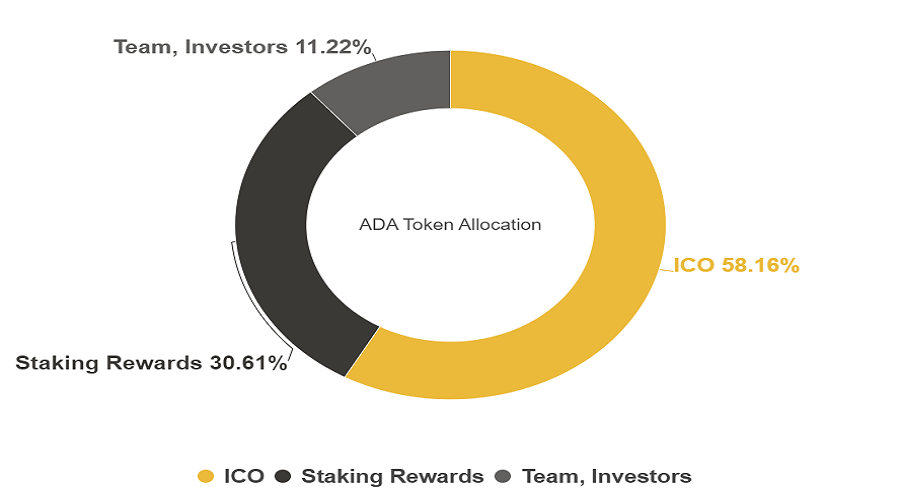
ADA Token Sale
The sale of ADA cryptocurrency commenced in September 2015 and concluded in January 2017, resulting in the sale of approximately 26 billion ADA following five rounds, thereby increasing the overall funding amount to approximately 63 million dollars.
- 94.45% was bought by Japanese investors.
- 2.56% was bought by Korean investors.
- 2.39% bought by Chinese investor…
Detailed information about each round of sale is shown in the table below:

ADA Token Release Schedule
At present, the Staking Rewards section remains locked as Cardano has yet to complete the activation of this feature on the Shelly testnet version.
ADA Token Use Case
The potential applications of ADA coin may be queried. Analogous to ETH on the Ethereum network, the Cardano network encompasses five designated purposes for ADA implementation:
- Reward: The ADA coin will serve as a block reward for nodes within the network once Cardano activates this feature during the Shelly testnet via Staking.
- Staking:ADa coin holders have the opportunity to engage in staking activities through staking pools, which enable them to earn rewards upon the successful creation of a new block by the node.
- Pay:In the future, it is possible that the cryptocurrency ADA may serve as a payment method for covering the costs of issuing user-issued assets (UIAs) on the Cardano platform.
- Currency:ADA can also serve as a currency or medium of exchange within its respective blockchain network.
- Transaction fees on Cardano Blockchain: The Coin ADA is utilized as a means of transaction fee payment within the Cardano network, with a fee calculation formula as follows:
Transaction Fee = a + b × size
In there:
- a is the constant against DDoS (distributed denial of service attack) with the current level of 0.155381 ADA.
- b is the transaction cost constant which is currently 0.0000393946 ADA/byte.
- size is the size of the transaction in bytes.
How to mine ADA coin?
Due to the implementation of a Proof of Stake (PoS) consensus mechanism, Cardano does not allow mining of ADA coins and only permits staking by users.
Currently ADA can be staked on Daedalus, Yoroi, Exodust Wallet, or Ledger.
Project development team
Cardano is a project that was founded by Charles Hoskinson, who is also a co-founder of Ethereum and BitShares. As of the present time, Cardano is being managed and operated by three primary organizations, namely the Cardano Foundation, Emurgo, and IOHK.
Cardano does not disclose the specific contributions of each organization to the project. However, observation indicates that these organizations have all participated in building infrastructure for Cardano and have made contributions in areas such as Oracle and Wallet development.
Cardano’s Development Roadmap
Cardano has divided its development roadmap into five distinct phases, which include:
- Byron: The initial phase of Cardano involves the development of its community and the launch of the ADA coin. In terms of its network, it will be powered by designated nodes and block rewards will be burned.
- Shelly: This particular phase marks the convergence of Cardano network towards greater decentralization, alongside the implementation of the staking component.
- Goguen: At present, the Cardano network is implementing smart contracts and sidechains, enabling developers to design and develop decentralized applications (Dapps) on the platform.
- Basho: During the Cardano phase, optimization of scalability and interaction between different Blockchains was carried out with utmost diligence.
- Voltaire: This final piece of the puzzle will enable Cardano to become a community-operated decentralized network. As a result, users will gain the ability to vote and participate in decision-making processes that impact the network’s growth and development.
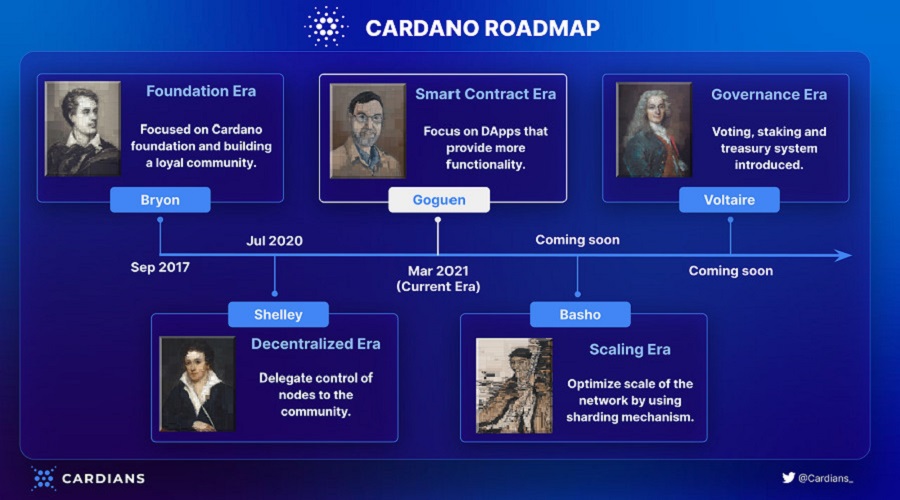
The future of the Cardano ecosystem
About Stake Pool and ADA token
In the near future, Cardano is planning to activate its staking function and integrate smart contracts into its network, thereby providing developers with a platform to construct decentralized applications (dapps) on the Cardano blockchain. Upon implementation of these updates, the circulating supply of ADA may experience inflated prices as a result of increased inflationary pressures caused by staking. However, one must have ADA coins in their wallet and become a node in order to participate in staking.
In addition to staking, Cardano provides the capability to construct decentralized applications (Dapps), which is expected to boost network activity and subsequently drive an increase in transaction fees for ADA. As a result, more individuals are likely to engage in staking ADA for rewards, potentially resulting in a reduction of ADA supply.
The effectiveness of this approach has become evident as 70% of ADA’s supply is currently staked in various pools, with a total value exceeding 50 billion dollars. This factor has also contributed to Cardano’s stable position as the third largest cryptocurrency by market capitalization, trailing behind only Bitcoin and Ethereum.
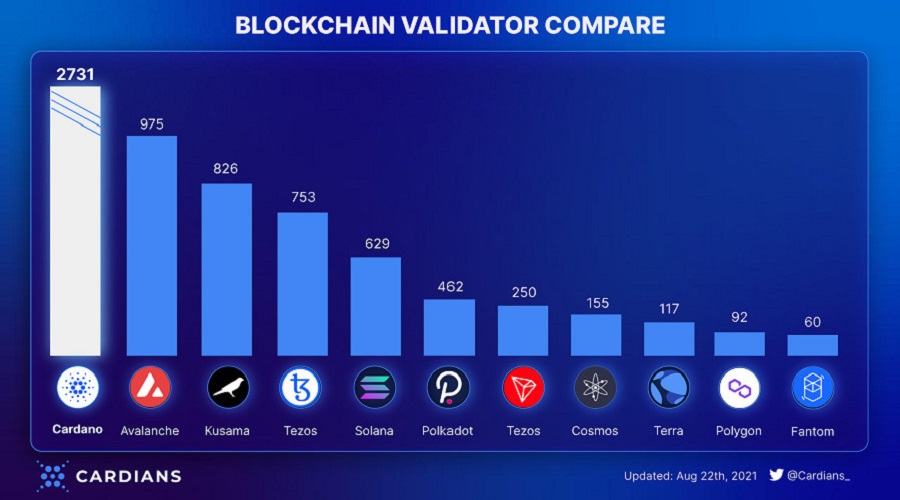
About the Cardano Ecosystem
At present, Cardano has planned to release Smart Contract in August 2021. However, as of now, they have not officially launched the Mainnet and only have a test version called Plutus for developers to experiment with.
In order to facilitate the growth of the decentralized finance space, Cardano has initiated the Project Catalyst program (Hackathon) with the goal of attracting developers and funding for further development. This action serves as a positive indication of Cardano’s commitment to its community.
Since the beginning of 2021, there has been a notable increase in the number of visionary development projects on the Cardano platform. However, due to the lack of Smart Contracts, these projects are not yet officially deployed on Cardano. It is hoped that Cardano will soon launch its Mainnet, so as to catch up with the DeFi sector of many other blockchain platforms.
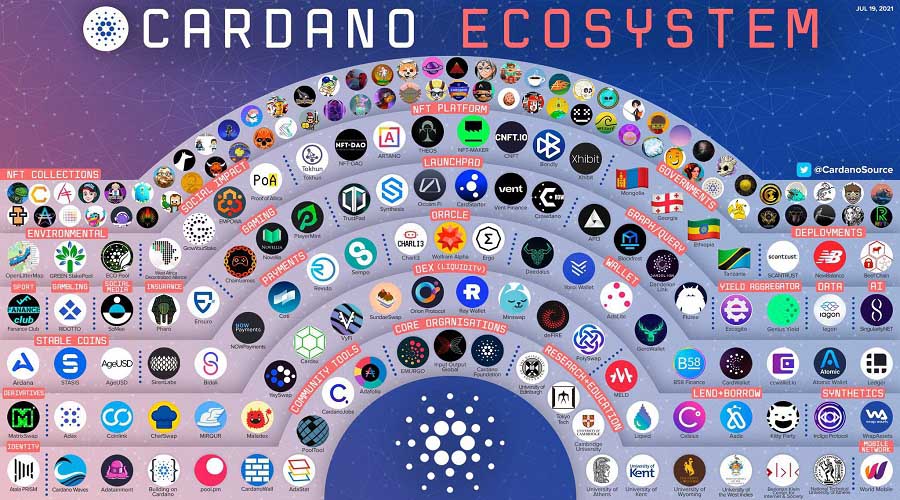
What is Octopus Network (OCT) ? A comprehensive overview of the OCT cryptocurrency
The NEAR Protocol currently hosts an immensely significant project for its ecosystem, which regrettably has yet to garner the attention...
Read moreWhat is Ripple ( XRP coin )? An general introduction to the Ripple coin
Bitcoin is the largest digital currency in the world, with a limit of 21 million units, and it is well-known...
Read moreWhat is Venom Network? It is the first blockchain to be monitored by the UAE regulatory authorities
What is Venom? Venom Network is the UAE's (United Arab Emirates) first Blockchain project initiated by the International Financial Center....
Read moreWhat is Mina Protocol (MINA)? Complete set of cryptocurrency MINA Token
The blockchain platform, Mina, has garnered significant attention from users for a considerable period, having been sold on Coinlist. Furthermore,...
Read moreWhat is Injective Protocol (INJ)? All you need to know about INJ coin
Injective was initially introduced in October 2020 as a cross-chain protocol. Since June 2021, the project has evolved into a...
Read moreWhat is Sui Crypto? Details About SUI Token
The emergence of Sui blockchain has brought forth a new generation of blockchain technology. Its groundbreaking features and notable advantages...
Read moreWhat is Polygon zkEVM? Layer 2 zkEVM is a class rival of zkSync
On March 27, 2023, Polygon zkEVM was officially launched on Mainnet Beta, joining the ranks of other prominent Layer zkEVM...
Read moreWhat is StarkNet Crypto? StarkNet Ecosystem Overview
Inquiring about the ecosystem of StarkNet crypto, we seek information on its various components and current development phase. Furthermore, we...
Read moreWhat is Astar Network & Shiden Network? Complete set of ASTR, SDN Token
This article will provide comprehensive information on Astar Network and Shiden Network, including their prominent features and tokenomics details of...
Read moreWhat is Gnosis Crypto (GNO)? Complete set of GNO Cryptocurrency
What is Gnosis Crypto (GNO)? This article provides comprehensive and valuable information regarding the digital currency Gnosis (GNO) for individuals...
Read moreWhat is Moonbeam Crypto? Complete set of GLMR & RIVER Cryptocurrencies
Moonbeam is a smart contract platform that has been built and developed to work compatibly with EVM on Polkadot. It...
Read moreWhat is Flow Crypto? Detailed information about FLOW token
In 2017, CryptoKitties, an NFT game on the Ethereum platform, experienced explosive growth that resulted in a sharp increase in...
Read moreWhat is Cardano ( ADA coin ) ? The complete information regarding the ADA coin
The Cardano platform is a blockchain program that provides smart contracts for the development of dApps. With its associated ADA...
Read moreWhat is Wemix (WEMIX)? Learn about the NFT Gaming platform from “the land of kimchi”
The emergence of the thriving NFT game trend has led to the creation of Wemix (WEMIX) as a means to...
Read moreWhat is Klaytn (KLAY)? Learn KLAY Cryptocurrency
Klaytn crypto is a public blockchain that offers security and transparency for businesses. The project's standout feature can be found...
Read more